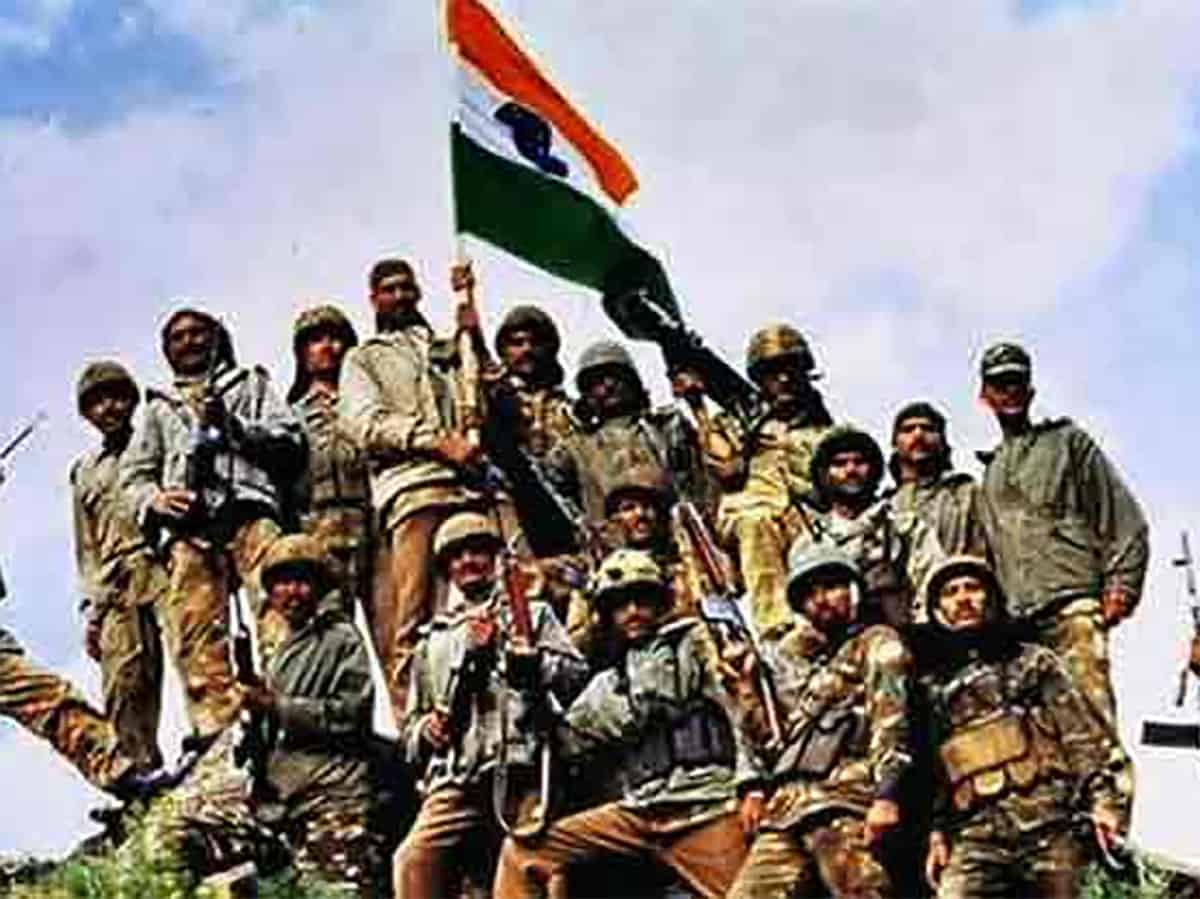
The Indian army has begun Kargil victory day celebrations marking the 24th anniversary of the war of the summer of 1999, which scripted a new history in mountain warfare in trans-Himalayas. With these celebrations, the army is also preparing for mega events to mark the silver jubilee of its success which is an all-time story of inspiration and sacrifice.
This also is a moment to pause and reflect on why this war had to be fought and won. The answers to these questions do not lie in the analysis done so far, which is neither thorough nor thought-provoking. Pakistan is indeed a fall guy, but the fact is that there have been more than necessary attempts to hide the failures that led to the war that should have never taken place. The only requirement was vigilance on borders and creating intelligence networks that could have beamed signals of the enemy’s intentions and plans, so that they could have been nipped in bud. That did not happen, and the country had to face and fight a war in the Himalayas at a huge cost. This calls for a fresh study on the Kargil War and what happened thereafter. Defences have been strengthened, communication and connectivity issues have been addressed, a new Corps has come up in the Ladakh region to take care of any future mischief on the Line of Control by Pakistan. But, has that all made things safer and do they offer a guarantee that a Kargil-type situation will not arise again . This is a matter for in-depth and minute study.
Pakistan had forced it upon India. There is absolutely no doubt that Pakistan had multi-strategic goals at stake when it initiated the intrusion of its soldiers at the start of 1999. The Indian posts along the Line of Control were vacant, as an unwritten obligated both Indian and Pakistani armies to move down from the forbidding heights during winters without changing the status quo of the LoC -it was a mutually advantageous arrangement in which the troops were saved from extremely harsh winters and at the same time helped in maintaining sanctity of the borderline.
Pakistan violated the arrangement, its soldiers drawn from North Light Infantry moved into the Indian posts and fortified the same with additional rocks and mortar. They had a complete view of the strategic Srinagar-Leh highway , the lifeline of the troops deployed along Pakistan-occupied Kashmir, Siachen glacier – the highest battle field in the world, and China. This was a sinister but hyper active strategy of Pakistan army under Gen. Pervez Parvez Musharraf, who later toppled the Nawaz Sharif government, and took over reins of the country.
So far, this military operation of the Pakistan army, camouflaged as an act of Kashmiri militants, to spotlight the “Kashmiri freedom struggle against the Indian occupation”, has been analyzed as the project in which Pakistan could disrupt Indian army movement on the highway, force India to concede Siachen glacier to Pakistani wishes, which could have enabled Pakistan to have an upper hand in this strategic region. Apart from that, it was to force hands of India, on Jammu and Kashmir. But there were larger objectives to disturb the geostrategic stability in the region. And, whether it is accepted or not, despite suffering huge humiliating defeat in the war that lasted for 50 days, Pakistan was able to achieve part of its strategic goals.
Though Pakistan paid a very heavy price – the death of hundreds of soldiers in the war, loss of face in the international community, it did set up a template, to exploit Indian vulnerabilities on border, owing to a sense of complacency and indifference to regular monitoring of borders in remote areas. The entire focus was on the Siachen glacier at that time, and Kargil was just a footnote to the whole context of India-Pak tensions on the LoC. Not that all the areas along the border with neighbouring countries have to be brought into focus all the time, but regular monitoring is mandatory. That was not happening. In fact, when Kargil happened, the Indian army had no clue as to what was being planned and executed on the other side of the LoC. Had lessons been learned in the post-Kargil war era, China could not have done what it did at the Line of Actual Control ( LAC) in eastern Ladakh in April-May 2020. It forced a standoff situation in the region, and which already has entered fourth year, and India is not having many options to reverse the Chinese aggression, for which euphemism of “ Stand-off” are being used to underline that the situation is less serious than it actually is.
Celebrations are good, and a moment to repose the nation’s faith in the armed forces, but it should not be forgotten that the facts and unlearnt lessons should also be taken into account without any whereaboutery.

